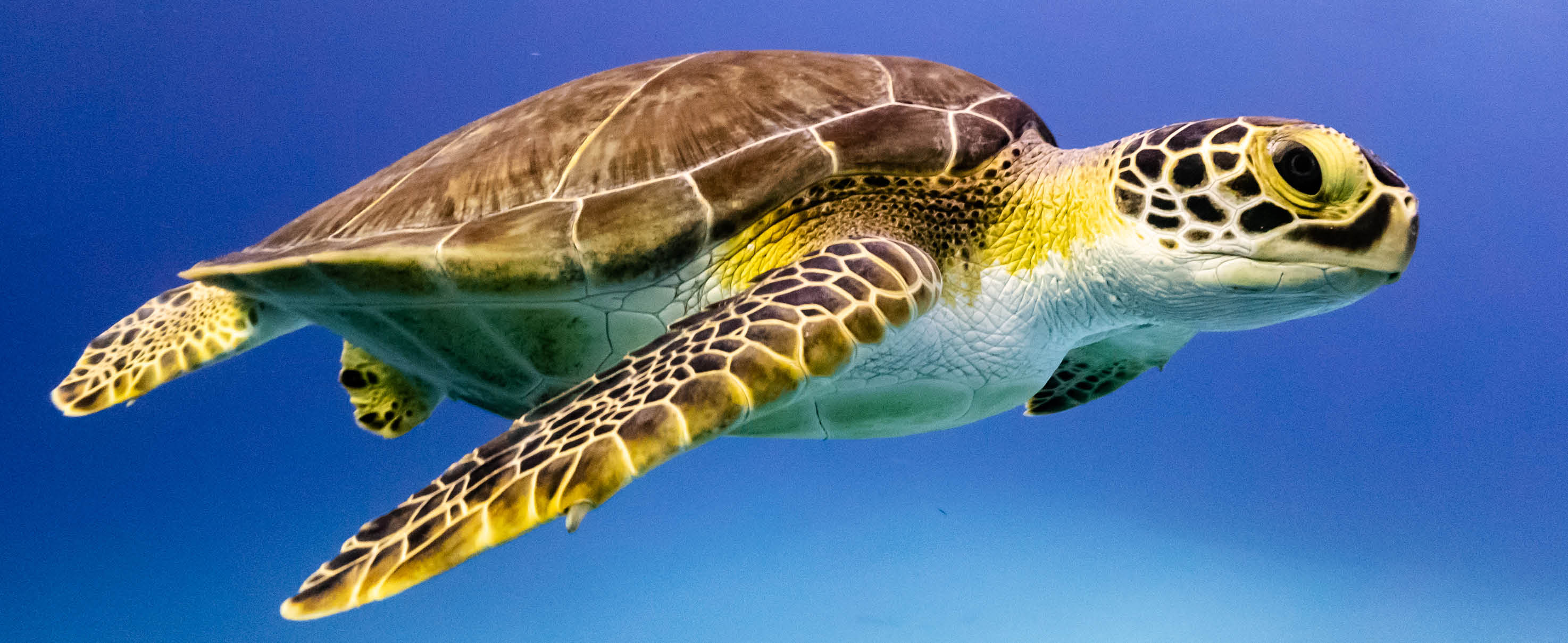
We are now in the very middle of the turtle nesting season in Qatar, and this month (16 JUNE) also marks World Sea Turtle Day.
The waters off Qatar are home to four species of these ocean-wanderers – the green turtle, the hawksbill, the olive ridley, and the loggerhead, with other species making occasional visits. These marine reptiles have been on Earth for around 100 million years – about 20 million years before Tyrannosaurus rex – and are found across the globe, predominantly in warmer waters.
But only one of the Gulf’s resident species lay their eggs in Qatar – the hawksbill – with each female laying between 75 and 100 eggs in their nests in the sand of Qatar’s northern beaches.
Identifiable by their hawk-like beak and the edges of their shell, which appears serrated, the turtles rely on the warm sand to incubate their eggs, with the sex of the hatchlings dependent on the temperature of the sand.
Hatching out around two months after being laid, the young turtles instinctively head down the beach where they are easy prey for seabirds and foxes. Upon reaching the sea, they then face a myriad of dangers in the first few years of their life from birds and fish, and even when fully grown they can fall prey to animals like tiger sharks and bull sharks – both of which can be found in the Arabian Gulf.
More significantly, though, are the dangers from humans; worldwide, hawksbill turtles are now critically endangered, with loss of habitat, pollution, poaching, and entanglement in fishing nets and other rubbish discarded in the ocean posing serious risks to the survival of the species.
In Qatar, the turtle is protected, with one of the main nesting sites – Fuwairit beach – completely closed to the public during the turtle nesting season from 1 April to 1 August. Nests in other locations are also monitored and sometimes moved, with the young turtles being released into the Gulf once they have hatched.
Once in the sea, the young hawksbill turtles are omnivorous, feeding on small crustaceans and fish eggs, and graduating to jellyfish, corals, sponges, sea urchins and squid as they grow. The animals reach adulthood once their shell – or carapace - reaches between 65 – 95cm and depending on the availability of food, this could take anywhere from 10 – 30 years. They are then capable of breeding, returning to the beaches where they hatched where the cycle begins again.
For more information about sea turtles, visit the Library and check out our resources. They include:
- The Biology of Sea Turtles, edited by Peter L. Lutz and John A. Musick
- Between the Tides: In Search of Sea Turtles, by George Hughes
- Discover Sea Turtles, by Dr. Virginia Loh-Hagan
- Sea Turtles, by Nancy Furstinger
- So Excellent a Fishe: A Natural History of Sea Turtles, by Archie Carr

Add new comment